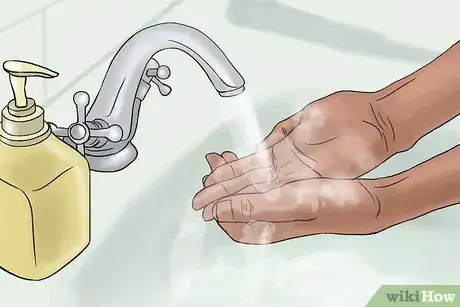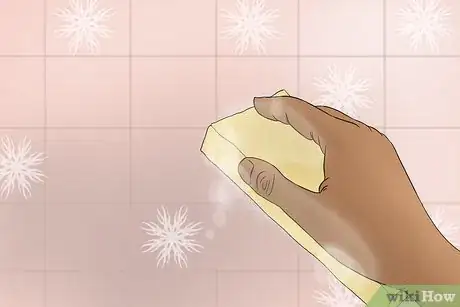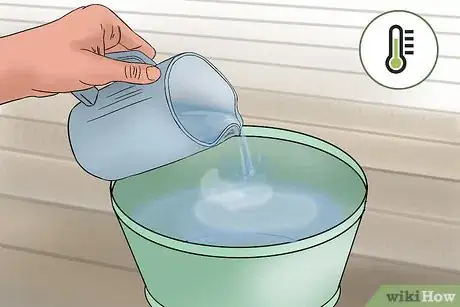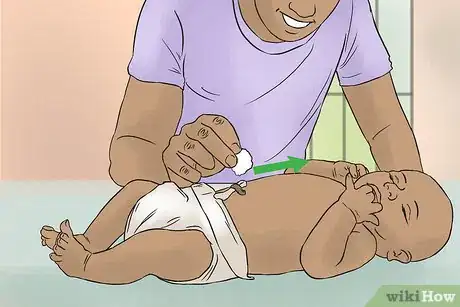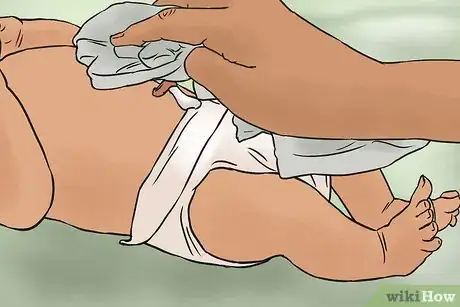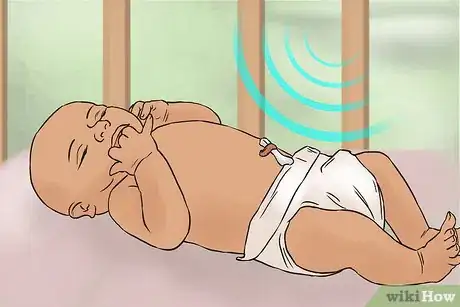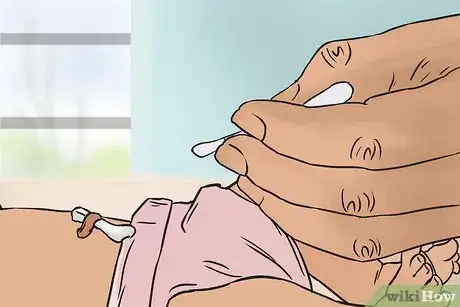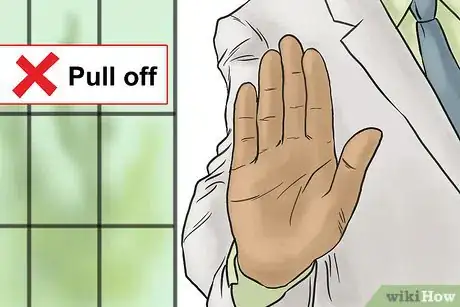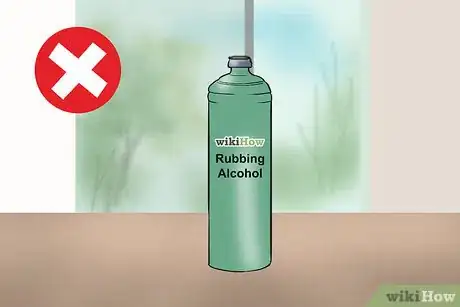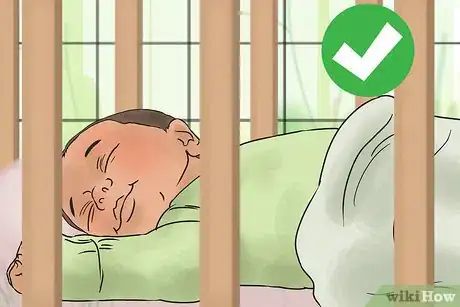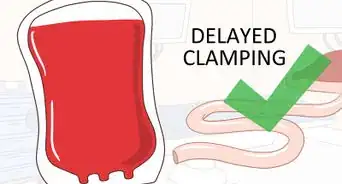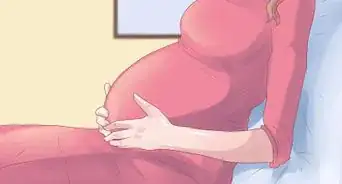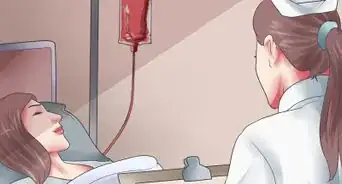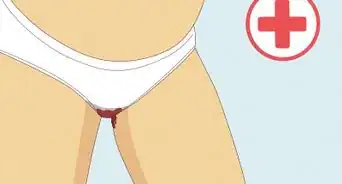This article was co-authored by Laura Marusinec, MD. Dr. Marusinec is a board certified Pediatrician at the Children's Hospital of Wisconsin, where she is on the Clinical Practice Council. She received her M.D. from the Medical College of Wisconsin School of Medicine in 1995 and completed her residency at the Medical College of Wisconsin in Pediatrics in 1998. She is a member of the American Medical Writers Association and the Society for Pediatric Urgent Care.
This article has been viewed 32,789 times.
Your baby’s umbilical cord will be cut immediately after they’re born, leaving a small umbilical stump that’s usually ½ to 1 inch long.[1] Because your baby no longer needs their umbilical cord, the stump falls off after about 1-3 weeks and leave behind a belly button.[2] In the meantime, it’s important to keep your baby’s umbilical stump clean and dry to prevent infection and irritated skin. Until the cord stump falls off on its own, clean your newborn's stump gently with plain water and let it dry thoroughly.
Steps
Bathing Your Newborn
-
1Wash your hands before touching the stump. Prevent infection by washing your hands before and after touching your baby’s cord stump. Use warm to hot water and antibacterial soap, and lather your hands well for at least 30 seconds. Rinse off all the soap and use a clean towel to dry your hands, or let them air dry.[3]
-
2Give your baby sponge baths. Until your baby’s stump falls off, avoid submerging their belly button in water in a tub or sink. Clean your newborn by giving them a sponge bath, and clean the stump every time you give your baby a bath or if it gets dirty from urine or poo.[4]
- Set your baby on their back on their changing station or on a clean, soft towel.
- Keep in mind that you should leave the stump alone as much as possible, so you don't need to worry about washing it except during bath times and when urine or feces gets on it.
Advertisement -
3Use lukewarm, plain water. Fill a clean bowl with warm water. Check the temperature on the skin of your wrist before using it on your baby. It should be warm but not hot.[5]
-
4Swab the stump from bottom to top. Dip a cotton swab in the water. Gently wipe the stump starting at the base and wiping up to the top. Use a fresh cotton swab when you start back at the cord’s base.
-
5Dry the stump gently but completely. It’s important to dry the umbilical stump and surrounding area really well. Either fan the area with a piece of paper or a cloth until it’s dry, or hold a clean cloth around the stump to dry it.[6]
- Dab the area around the stump dry. Don’t rub it.
- Keep the stump exposed to air until it is completely dry.
-
6Let the stump get a lot of air. Avoid covering up your baby’s stump – keep it exposed to air so it heals faster. Fold the top of their diaper down, or cut a notch in the top of the diaper around the stump.[7]
Following Safety Guidelines
-
1Look for signs of infection. It’s normal to see a little dried blood or a little bit of white or yellow crust around the cord stump, and for it to bleed a little bit when the stump falls off. However, look for signs that the stump is infected every time you bathe your baby. If any signs of infection are present, take your baby to the doctor right away – an infected cord can cause serious problems. Look for:[10]
- Pus (sticky white, yellow, or green goo oozing from or near the cord)
- Redness or swelling in the skin around the cord
- A bad smell coming from the cord base[11]
- Continuous bleeding, like if you wipe away a drop of blood and another drop appears
- Changes in your baby’s demeanor, like they’re more fussy, lethargic, or have a fever[12]
-
2Don’t pull off the stump. Every baby is different, and how long it takes the cord stump to fall off will vary. Resist the urge to pull the cord off, even if it looks like it’s about to fall off. It’s healthier and safer to let the stump fall off naturally.[13]
-
3Skip the rubbing alcohol. Parents used to clean the baby’s umbilical stump with rubbing alcohol, but now standard practice is to skip the alcohol. This may help the baby’s stump to heal more quickly, and their skin is less likely to get dry or irritated.[16]
-
4Ask your pediatrician before using alternate products. Some parents use Goldenseal root or Echinacea in the cleaning process. If you want to use any products to clean your baby’s stump, talk to your baby’s doctor first. Plain water is usually recommended, but you can use another product if it’s approved by your doctor and they instruct you on proper use.[17]
-
5Continue to keep your baby’s belly button clean after the cord falls off. Once the cord falls off you can bathe your baby in a tub, if you take proper precautions. Continue to be gentle when cleaning your baby’s belly button. Never leave your baby unattended in the bath.
References
- ↑ http://americanpregnancy.org/first-year-of-life/umbilical-cord/
- ↑ http://www.mayoclinic.org/healthy-lifestyle/infant-and-toddler-health/in-depth/umbilical-cord/art-20048250
- ↑ https://www.drugs.com/cg/cord-care.html
- ↑ https://www.drugs.com/cg/cord-care.html
- ↑ http://www.mayoclinic.org/healthy-lifestyle/infant-and-toddler-health/in-depth/umbilical-cord/art-20048250?pg=2
- ↑ http://www.mayoclinic.org/healthy-lifestyle/infant-and-toddler-health/in-depth/umbilical-cord/art-20048250?pg=2
- ↑ http://www.mayoclinic.org/healthy-lifestyle/infant-and-toddler-health/in-depth/umbilical-cord/art-20048250?pg=2
- ↑ http://americanpregnancy.org/first-year-of-life/umbilical-cord/
- ↑ https://www.drugs.com/cg/cord-care.html
- ↑ http://www.mayoclinic.org/healthy-lifestyle/infant-and-toddler-health/in-depth/umbilical-cord/art-20048250?pg=2
- ↑ http://americanpregnancy.org/first-year-of-life/umbilical-cord/
- ↑ https://www.drugs.com/cg/cord-care.html
- ↑ http://www.mayoclinic.org/healthy-lifestyle/infant-and-toddler-health/in-depth/umbilical-cord/art-20048250?pg=2
- ↑ https://www.drugs.com/cg/cord-care.html
- ↑ https://www.drugs.com/cg/cord-care.html
- ↑ http://www.mayoclinic.org/healthy-lifestyle/infant-and-toddler-health/in-depth/umbilical-cord/art-20048250?pg=2
- ↑ http://americanpregnancy.org/first-year-of-life/umbilical-cord/
- ↑ http://americanpregnancy.org/first-year-of-life/umbilical-cord/
About This Article
To clean the umbilical cord stump on your newborn baby, give it a sponge bath every time you bathe your baby or if it gets dirty from urine or poo. Before cleaning the stump, place your baby on its back on its changing station or a clean, soft towel. Next, fill a clean bowl with warm, but not hot, water. Unless your doctor tells you otherwise, there’s no need to use soap or anything else in the water. Dip a cotton swab in the water and gently wipe the stump with the swab from the base to the top. After each wipe, grab a fresh swab and start again from the base. Finally, fan the area with a piece of paper to dry. For more help from our Medical co-author, like how to check for signs of infection, read on.
